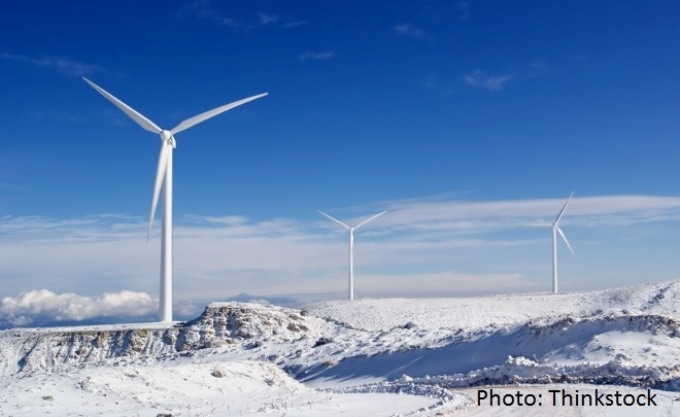Dec 11 2017
A variety of low carbon technologies from solar energy or wind to fossil carbon capture and sequestration (CCS) greatly differ when talking about indirect greenhouse gas emissions in their life cycle. This has been concluded based on an inclusive new study carried out by a global team of scientists and this study has now been published in Nature Energy.
 Wind turbines in winter (Photo: Thinkstock)
Wind turbines in winter (Photo: Thinkstock)
Contrasting to what some critics argue, the researchers discovered that solar energy and wind belong to the more promising when referring to life-cycle emissions. They also demonstrated that a complete decarbonization of the global power sector by scaling up these technologies would only encourage modest indirect greenhouse gas emissions – and thus not hinder the conversion towards a climate-friendly power system.
Both fossil and non-fossil power technologies still come with a certain amount of greenhouse gas emissions within their life cycle – on the one hand because it needs energy to construct and operate them, on the other hand because of methane emissions, e.g. from coal and gas production. However, we found there are substantial differences across technologies regarding their greenhouse gas balance. Electricity production from biomass, coal, gas and hydropower for instance induces much higher indirect greenhouse gas emissions than nuclear electricity, or wind and solar-based power supply.
Michaja Pehl, Lead Author
Along with their study, the researchers provide a comprehensive and innovative global analysis of indirect greenhouse gas emissions and embodied energy use – from all applicable power sector technologies. Their study, for the very first time, merges the strengths of simulations based on included energy-economy-climate models capable of estimating cost-optimal long-term strategies in order to meet climate targets with life cycle assessment approaches. These research branches have operated independently so far.
By exploring the life cycle emissions of future low-carbon supply systems and the consequences involved in technology choices, they discovered that fossil power plants available with CCS will indeed still account for life-cycle emissions of almost 100 grams of CO2-equivalents per kWh of electricity generated, 10 times more than the almost 10 grams of CO2-equivalents for solar power and wind they project for 2050 in a climate protection scenario in which power production is considered to be almost totally decarbonized.
Solar and wind provide a much enhanced greenhouse gas emissions balance than fossil-based technologies
There is no such thing as truly clean coal. Conventional coal power currently comes with around 1000 grams of CO2-equivalents per kWh. Capturing CO2 from coal plants can reduce emissions per kWh by around 90 percent, but substantial life-cycle greenhouse gas emissions remain. To keep global warming below 2 °C, however, virtually carbon free electricity is necessary. This makes it increasingly implausible that coal power will play a major role in the future, even if equipped with CO2 scrubbers.
Gunnar Luderer, Project Leader and Energy System Analyst, PIK
“When it comes to life cycle greenhouse gas emissions, wind and solar energy provide a much better greenhouse gas balance than fossil-based low carbon technologies, because they do not require additional energy for the production and transport of fuels, and the technologies themselves can be produced to a large extend with decarbonized electricity,” states Edgar Hertwich, co-author of the study and an industrial ecologist from Yale University. Less and less energy will be required for developing wind turbines and solar photovoltaic systems because of the technological innovation.
“Some critics have argued renewable energies could come with high hidden greenhouse gas emissions that would negate their benefits to the climate. Our study now shows that the opposite is true,” added Luderer.
During the transition to clean power supply, the additional life-cycle emissions for building up wind and solar capacities are much smaller than the remaining emissions from existing fossil power plants before they can finally be decommissioned. The faster the low-carbon transformation of power supply is accomplished, the lower is the overall remaining carbon burden for the climate.
Gunnar Luderer